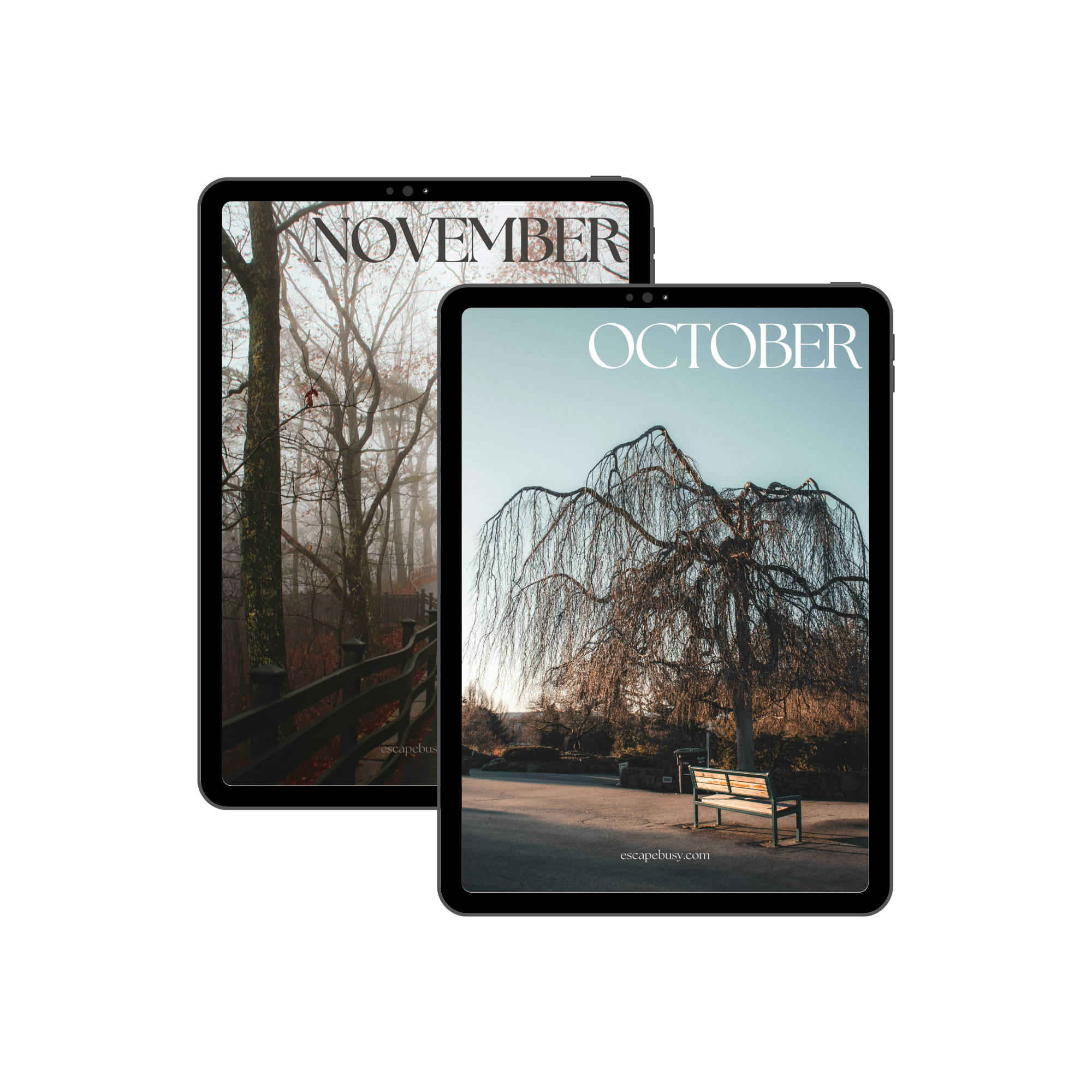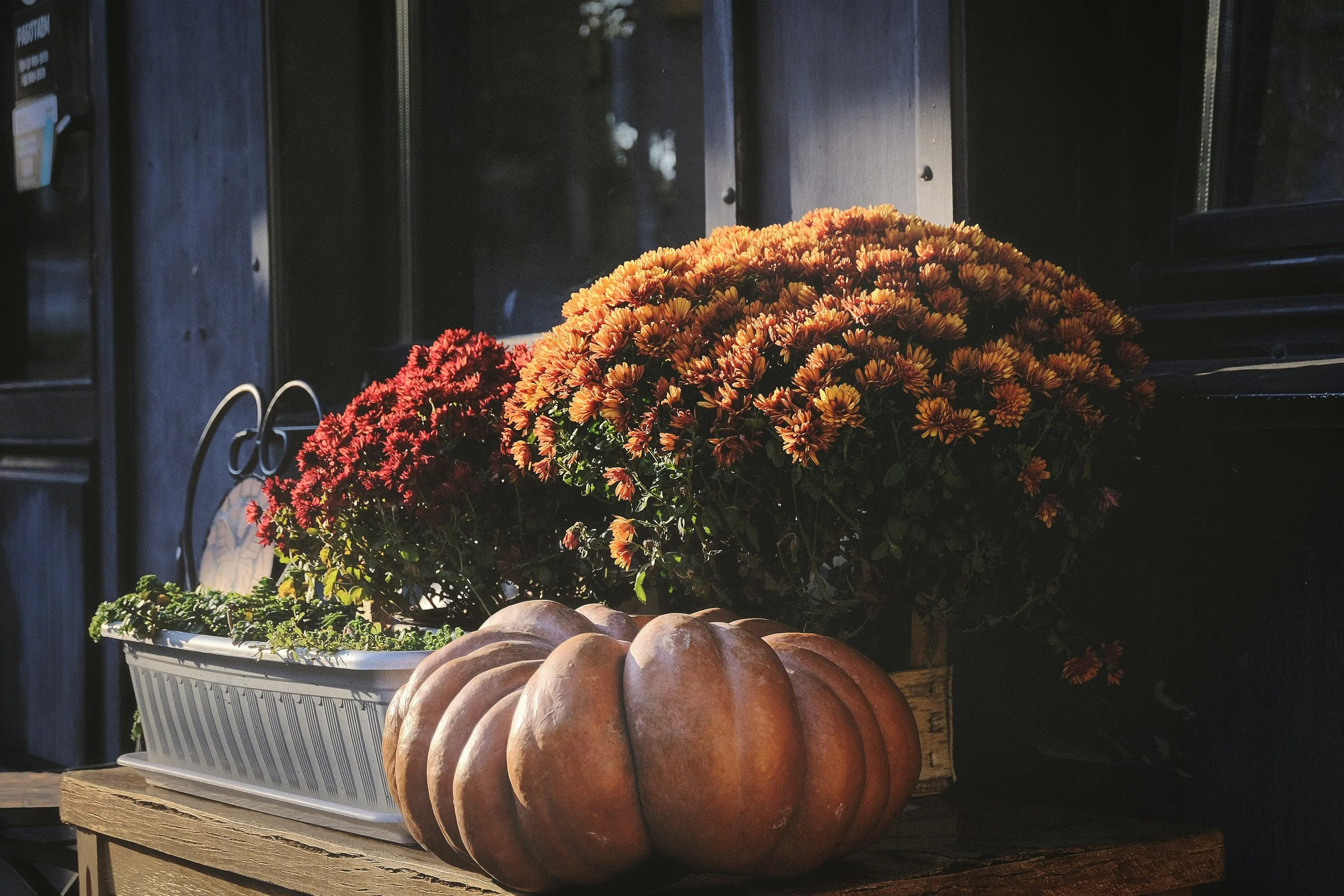No More Winter Worries
Learn to Love the Darker Months
On finding balance, warmth, and rhythm through the winter season.
For years, the darker months unsettled me. I could feel the dread arrive before the season even turned — that faint, creeping weight that comes when the light begins to fade and the air grows cold. Every winter, around three or four in the afternoon, a familiar anxiety would settle in. That’s when the sun disappears where I live, and each day I’d brace myself for the dimming.
It wasn’t fear exactly, but it stirred something deep, a restlessness I couldn’t name. I’d turn on all the lights, stay busy, and push through, fighting tiredness as if I could outsmart it. But the harder I resisted, the more I felt off balance. I was trying to move at the same pace all year, to stay bright while everything else was slowing down.
Over time, I began to understand that I wasn’t meant to fight the dark. I was meant to move with it.
Light and Rhythm
I used to think the answer was more light: brighter rooms, later nights, anything to mimic summer. But it turns out the body doesn’t need constant brightness. It needs rhythm.
Now, I start the day by seeking daylight, even if it’s just a few minutes by the window. That simple exposure wakes something in me. It tells my body it’s morning, time to rise.
When the light fades, I let it. I turn off harsh overheads and fill the space with low, warm light — table lamps, candles, soft glows that ease the transition. The shift signals the end of the day, reminding me to move more slowly, to settle.
It’s remarkable how much this small change helps. My sleep is deeper, my energy steadier, and the evenings feel calmer. Even the darkness begins to feel kind — not an absence, but a signal to soften.
Deep Nourishment
Winter has its own appetite. I’ve learned to listen to it. Slow-cooked stews, roasted roots, bone broth, tea that warms from the inside out. These are the meals that feel right now. They ask for patience and care, and in return, they restore.
Cooking has become one of my favorite winter rituals. It’s rhythmic, sensory, grounding. The scent of onions browning in butter, the sound of something simmering for hours. These small things create warmth that reaches beyond the body.
And maybe that’s why gratitude feels easier this time of year. Comfort isn’t constant, so you notice it more deeply: the warmth of a mug after coming in from the cold, the glow of light against the window, the simple joy of being inside.
Keeping the Fire Alive
Warmth isn’t just something you find; it’s something you build. It begins inside — in breath, in movement, in connection. When the air turns cold, I try to keep energy moving instead of letting it stagnate. Walking briskly, dancing while cooking, anything that wakes the body’s inner heat. That warmth feels more sustaining than any blanket. It stirs something vital, a reminder that life keeps moving even in stillness.
I think of the womb, the lower belly, as a kind of hearth — the seat of both creativity and vitality. When that part of me feels cold or neglected, everything slows: energy, ideas, mood. So I protect it. I eat warm food, take baths, wear layers across my middle, and always keep my feet warm. In many traditions, warmth here is linked to balance — and I feel that truth in my own rhythm.
Creativity is another kind of fire. It’s what keeps me feeling awake in the darker months. I keep winter projects — painting, writing, cooking, sewing — things that invite focus and flow. Creation generates its own light, a steady glow that comes from the inside.
And then there’s connection, the warmth shared between people. A long dinner, an honest conversation, laughter that fills a dimly lit room. Those moments remind me that warmth multiplies when shared.
Keeping the fire alive is about moving with life, intention, and care.
A Shift in Perspective
For a long time, I thought of winter as something to survive — a long, gray stretch before spring returned. But the more I slow down, the more I see its quiet abundance.
Nature doesn’t stop in winter; it gathers. Roots deepen, soil restores, the earth turns inward to prepare for what comes next. The same is true for us. We need seasons of rest, reflection, and recalibration.
Winter is slower, yes, but it’s also richer. The beauty is more subtle with the silver light on bare branches, the shimmer of frost across open fields, the rough texture of bark and earth. There’s honesty in it, a clarity that color sometimes hides.
I still feel the worries sometimes, but they no longer define the months ahead. They’re a reminder to tend to myself. To find daylight, eat well, move, create, and connect. To let the season be what it is, and to meet it as I am.
Winter still asks more of me, but it gives more too: slower mornings, softer light, smaller joys that feel like gifts. And that’s the beauty of it and once you stop resisting, you start seeing how alive the quiet season really is.
Monthly Mood
So much of what I love about seasonal living has found its way into Monthly Mood, a digital magazine for slow, intentional living through the seasons. You can learn more about easing into the darker months, gentle rituals for seasonal transition, and finding comfort in the rhythms of winter in the November issue.
Each issue of Monthly Mood is a guide for the month filled with reflections, recipes, rituals, and inspirations for aligning with nature’s rhythm. If you’ve been craving a slower pace and a more grounded way of living, Monthly Mood is for you. You can explore the current issue here or subscribe to receive each new month.
Final Thoughts
Winter has a way of asking for honesty. It strips the world down to its essentials — bare branches, quiet skies, soft light — and invites you to do the same. Beneath the surface stillness, life is still happening, slowly, quietly, preparing for what’s next.
You don’t have to love every cold morning or every long night, but you can learn to meet them with gentleness. Let them remind you that slowing down is part of being alive. Light a candle before the sun rises, make something warm, find one small joy in the dim hours.
The darker months aren’t just something to get through. They’re a chance to rest and to root more deeply into what sustains you. There is beauty here — in the pause, the quiet, the waiting — and if you let it, winter will teach you how to feel alive in new and quieter ways.








